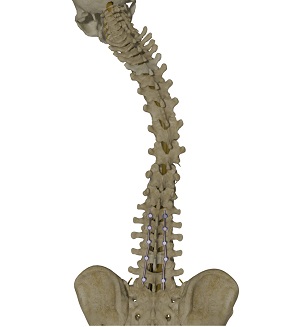
What is Proximal Junctional Kyphosis?
Proximal junctional kyphosis (PJK) is a common complication following adult spinal deformity surgery or a long spinal fusion. It is characterized by an abnormal bend of the vertebral column or spine, resulting in pain and reduced function.
What are the Causes of Proximal Junctional Kyphosis?
Proximal junctional kyphosis may occur due to human or instrument error during spinal deformity correction surgery.
There are patient-related risk factors that increase the likelihood of PJK such as:
- Older age
- Osteopenia, or loss of bone mass
- Osteoporosis, or weak and brittle bones
- History of trauma or fracture
- Female gender
What are the Symptoms of Proximal Junctional Kyphosis?
Some people with proximal junctional kyphosis may remain asymptomatic, while others may exhibit the following:
- Increased pain
- Loss of functional movements
- Walking difficulty
- Recurrence of deformity despite surgery
In severe cases, proximal junctional kyphosis may cause neurologic deficits. This means that a person may experience abnormality or loss of function in a particular body area due to injury to the spinal cord, nerves, or associated muscles. Examples include an inability to speak, bend, or hold or grasp objects.
How is Proximal Junctional Kyphosis Diagnosed?
Your spine specialist will review your medical history, check your symptoms, and perform a thorough physical examination. You will also be required to undergo imaging tests such as X-ray, MRI (magnetic resonance imaging), or a CT (computed tomography) scan to allow better assessment of your condition.
What are the Treatment Options for Proximal Junctional Kyphosis?
People who do not have symptoms may not require immediate treatment. However, if severe symptoms exist or a deformity of the proximal junction progresses rapidly, surgical treatment is needed.
Before scheduling your surgery, your doctor may take a spine lateral X-ray in a standing position to determine the fundamental cause of PJK and prevent any further occurrences.
Proximal junctional kyphosis can be treated through revision spine surgery. This surgical procedure involves neural decompression followed by the extension and realignment of the existing instruments implanted in the vertebra during your previous surgery. If the spine is rigid, an osteotomy may be performed.
Nerve decompression surgery is performed to relieve excess pressure from a nerve due to the surrounding skeletal structures. The goal is to either remove anything that is pressing on the nerve or to widen any blocked or narrow passages.
How to Prevent Proximal Junctional Kyphosis?
The following measures may help reduce and prevent proximal junctional kyphosis:
- Proper selection of the surgical procedure used
- Nutritious diet
- Calcium and vitamin D supplements
- Regular exercise
